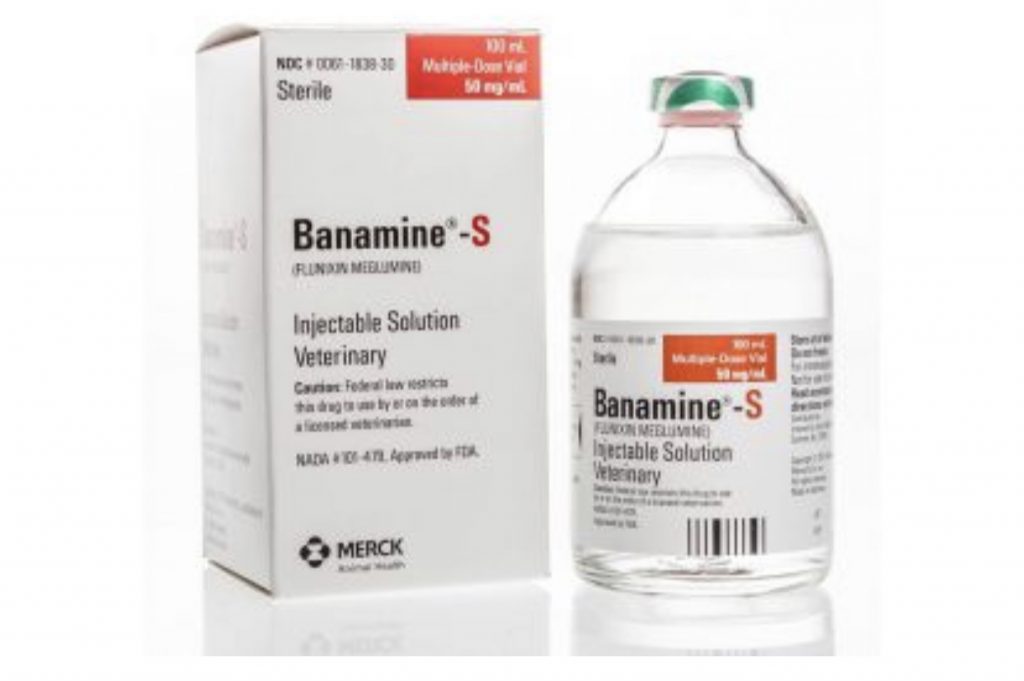
Banamine- Bute What Is It?
By: Paige Galindo
There is no argument that horses are amazing athletes. More than 60% of the horse’s body is made of muscle which means more than 700 muscles are powering the horse across the racetrack. Like all athletes, horses’ muscles become sore after a certain amount of exertion. To counter this, most veterinarians prescribe the use of banamine or phenylbutazone, also known as bute. Both are anti-inflammatory agents that attack the natural process of inflammation to lessen the pain in the horse’s muscles. Some concerns have been raised specifically surrounding the use of banamine injected directly into the horse’s muscles. While it may seem like a convenient solution to a tight situation, injecting banamine intramuscularly can have dangerous side effects.
Why is it used?
Soreness in the muscles is believed to come from microscopic tears in the muscular tissue after a heavy workout. This triggers the inflammation which is a natural and necessary process for healing these tears. Unfortunately, while soreness does not always indicate an injury, the pain inhibits performance nonetheless. Just as an athlete will take a few Advil, the same goes for horses who are given banamine.
How does it work?
The scientific name for Banamine is flunixin meglumine. It is an NSAID that prevents the accumulation of prostaglandins, which are components in the blood that act as mediators of sorts to aid in the inflammation process. Inflammation is needed because it involves a series of biochemical reactions between blood vessels and inflammatory cells that are all used to help in the healing process. The biochemical reactions utilize heat, swelling, and flooding the injured site with white blood cells to combat any possible infection. The prostaglandins help keep this process going and as such further contribute to the horse’s pain which is then halted by Banamine.
The Risk
The majority of the time, administering Banamine without the customary IV is generally safe without side effects. However, there’s always the smallest percentage something will go wrong with any sort of medication and when it does, the results are ugly. When there is not the luxury of veterinary assistance for IV administration, a quick stab of a syringe into the muscle is required. The danger happens when the needle enters the skin for administration and punctures a muscle that has been carrying dormant spores of the bacteria Clostridium. When this happens, the bacteria begins to grow and creates swelling under the horse’s skin. This soon turns into crusty gaseous pockets that must be surgically opened to release the pressure then followed by the use of antibiotics in the horse. Recovery from this disease can take several months to heal so it is crucial to catch its development in the early stages.
While evidence has found that clostridium can lie dormant inside a horse, it is also a bacteria that is present in the environment alone with its spores being extremely resistant to environmental conditions. That being said, it is impossible to determine whether or not the bacteria was already inside the muscle upon injection or if the injection introduced the bacteria from the outside. It only grows in an oxygen-free environment, which is what the needle creates by damaging the muscular tissue. The needle suddenly disrupts the blood flow being fed to the muscle and therefore blocks the oxygen supply that is carried through the blood. It would make sense to conclude that the bacteria was simply lying dormant inside the horse but not enough evidence can prove or disprove this theory; it is only within the realm of possibilities.
Concluding concerns
Aside from the risk of triggering the gestation of bacteria, another possible concern with using banamine would be the potential of masking a very serious injury. As stated before, muscle soreness does not always mean there is a bigger problem at hand and is normally brushed off as “pain is weakness leaving the body.” However, soreness can be a large red flag that sometimes requires further investigation. It could be very easy to give a sore horse banamine as a quick fix and unknowingly leave a much bigger problem untreated. The swelling and soreness happen for a reason and it is important to know fully what is going on inside the horse before administering a quick fix for pesky soreness.




